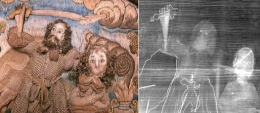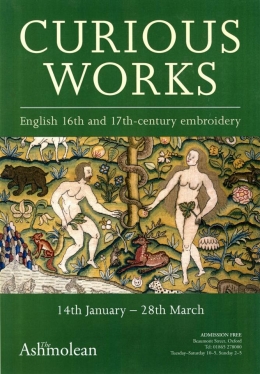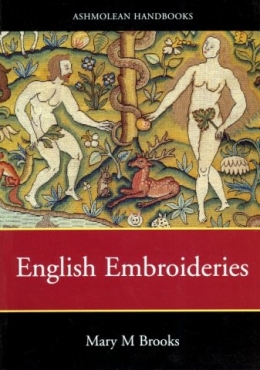16th and 17th Century raised work embroideries
This research was undertaken with the aim of creating an innovative publishable body of knowledge on these important but under-valued embroideries. It aimed to integrating a physical and intellectual understanding of the pictorial images on 17th century English embroideries with their social context including their role as gender specific artifacts. I have sought to understand the contemporary significance by using reading contemporary literature, such as guides for women, poems, popular theology and sermons, especially funeral sermons preached for women. This revealed the frequency with which certain images were held up as models for women but also the flexibility with which they could be used to argue different religio-political positions. The fact that much of this evidence is filtered through a male perspective led a review of 17th century diaries written by women. Usefully, these can be highly revealing of individuals’ attitudes to their early education in embroidery skills but, frustratingly, rarely mention the images they selected. Reviewing approaches to female education in the 17th century has been very fruitful in revealing the use of embroidery in girls’ socialisation while also highlighting the contradictory attitudes of educational reformers to the importance of embroidery skills. The evidence suggests that many embroideries were produced as school work where originality of technique appears to have been stressed over originality of image. Wills and shop inventories have provided some evidence about the availability and prices of the embroidery materials for these embroideries although much yet remains to be uncovered in this area. Unexpectedly, 17th century drama has proved an extremely useful source.
Technical analysis and X-radiography has been a vital part of this research. The use of unexpected materials such as bird’s beaks has been revealed, raising further questions about the relationship of art and nature in the 17th century. This research has museological aspect in the analysis of the implications of the transfer of these embroideries from the private and domestic sphere to the public museum which has, unexpectedly for such strongly female gendered artefacts, largely come about through the agency of male collectors.
Research focused initially on cataloguing the 17th century English embroideries at the Ashmolean Museum, University of Oxford. The resulting exhibition Curious Works was accompanied by a detailed handbook. Research is now focusing on the cataloguing of a major English private collection to be published by Needleprint
Grant aid for the initial research was obtained from the ARHB (Research Leave Scheme & Small Award), British Academy, The Millennium Commission (Sharing Museum Skills Award) & the University of Southampton (Staff Small Awards).



